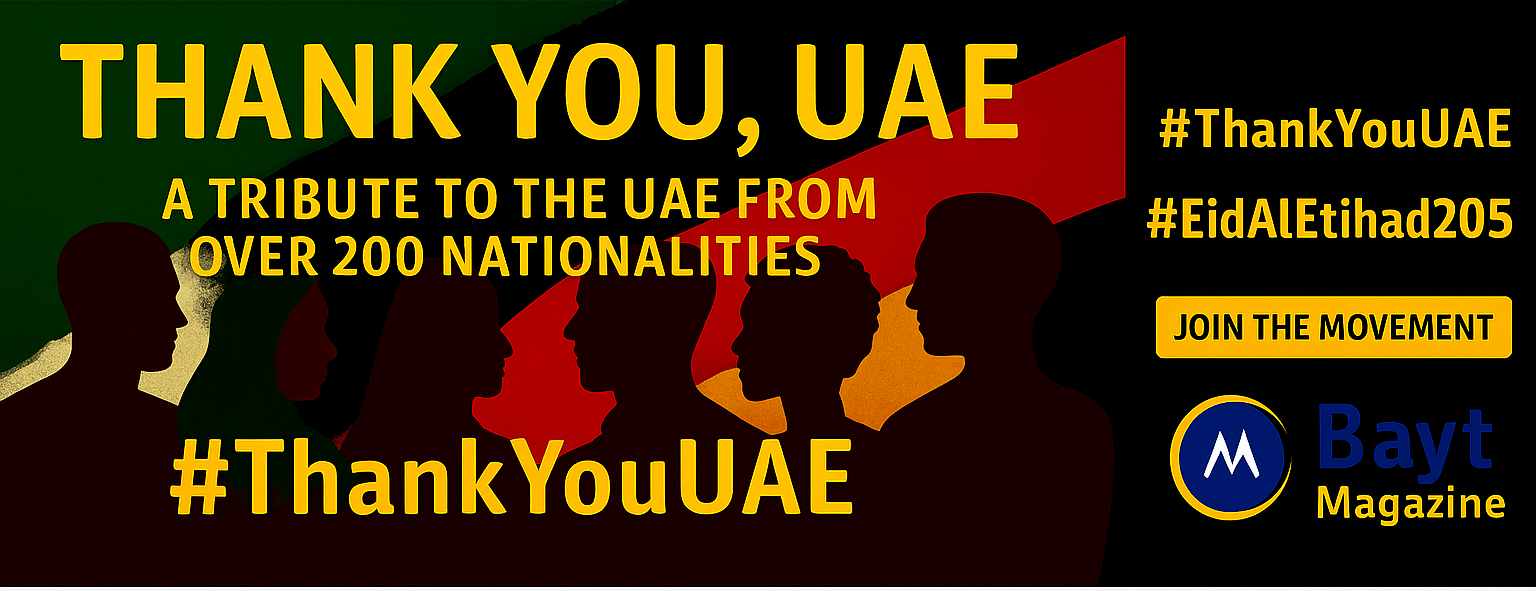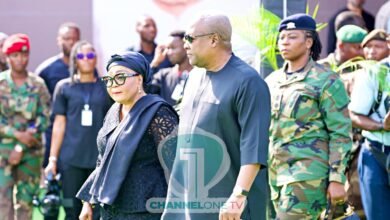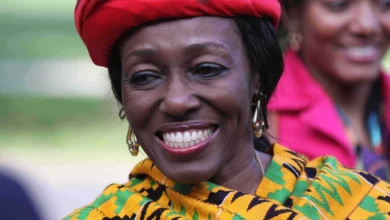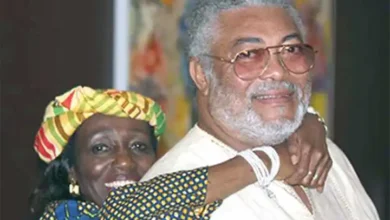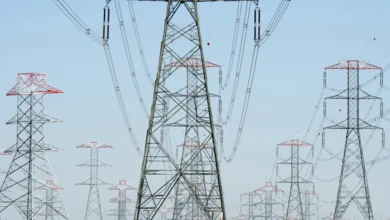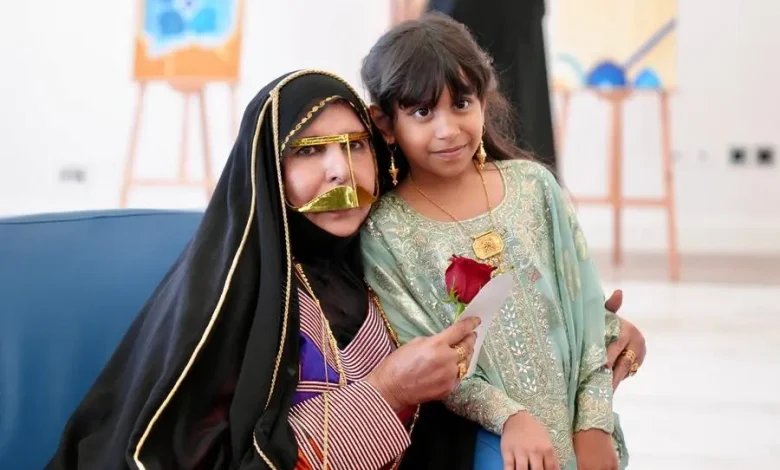
Inheritance and Innovation: Emirati Women Navigating Tradition in a Post-Oil Era
UAE women have dramatically changed their workforce presence. Their participation grew from a mere 1% in 1975 to 17% in 2009, and stands at 28% today. This remarkable progress challenges many external perceptions about gender roles in the Emirates.
Women’s rights in UAE have shown unprecedented growth over the last several years. The UAE’s score on the World Bank’s Women, Business and Law Index nearly tripled to 82 by 2023, exceeding the global average of 77. Women’s strength in UAE shines through multiple sectors. They hold 75% of positions in education and health and represent 59% of the national labor force. The country’s commitment to gender equality continues as women now occupy 30% of diplomatic roles and 50% of the Federal National Council’s seats.
The story of Emirati women weaves through deeply rooted traditions and modern opportunities. Their roles have transformed significantly from the pre-oil era to today. These changes span across economic contributions, education, and extend to UAE women’s traditional dress, which remains a powerful symbol of both identity and transformation.
The Pre-Oil Legacy of Emirati Women
Many people today think UAE women stayed at home before the oil era. The truth paints a different picture. These women actively shaped their communities’ economic and social fabric. Their roles went far beyond household duties.
Economic contributions in agriculture and trade
Life before oil discovery relied heavily on women’s work. Men left for pearl diving trips from June to November. During these months, women took charge of the local economy. They handled both home duties and business matters with skill.
Middle and lower-class women had more economic freedom than their wealthy counterparts. Their business spirit showed through various activities:
- Trading goods and commodities
- Providing tailoring and seamstress services
- Running retail shops and businesses
- Taking charge of pearling ships and real estate
- Working in farms and date harvesting
- Making and selling dairy products
Women weren’t just mothers and wives. Of course, they did much more than stay at home, unlike what many believe today. The community needed their economic input to survive, especially when men sailed away during pearl season. These women became managers, producers, and independent economic players.
Their financial independence highlights gender equality in the UAE long before modern times. They ran their homes’ finances while helping the broader economy through farming, trading, fishing, and crafts.
Leadership roles in tribal and royal families
Royal and prominent women wielded real political power. Sheikha Hussa Al-Murr, Dubai ruler Sheik Saeed’s wife, proved this by leading armed forces to protect Dubai’s tower during an attack. She ran her own public majlis and excelled in trade and business.
Sheikha Salama bin Butti al-Qubaisi, Sheik Zayed’s mother, helped her son financially when Al Ain’s economy struggled before oil discovery. She brought stability to Abu Dhabi by promoting unity among her sons.
Bedouin women led their communities by running homes, making key decisions, and keeping tribal traditions alive. Their work kept social order during nomadic times, showing deep historical roots of women’s rights in UAE.
Public presence in markets and medicine
UAE women before oil had a strong public presence. They dominated market trading so much that Dubai’s legislative council faced protests when trying to stop women from selling fish. Fishermen knew their wives got better prices than they could.
Women excelled in medicine too. Many practiced traditional healing using herbs and surgical methods like cauterization and cupping. These healers treated everyone, regardless of gender, earning respect across the Gulf states. Hamama Al-Tiniji from Sharjah supported her family through her medical work.
These women passed down cultural knowledge by teaching crafts and sharing stories. This helped keep Emirati identity strong despite big social changes. Bedouin women’s traditional Sadu embroidery served both practical needs and brought in income.
UAE women’s pre-oil legacy shows their strength has deep roots. Modern empowerment builds on centuries of active economic and social participation. This history gives us a better view of how women’s roles have grown, beyond what most people think today.
The Collapse of the Pearl Economy and Its Impact
Image Source: The National
The pearl industry’s collapse in the 1930s changed the economic world for Emirati women. This turning point changed women’s place in society and their public roles for decades.
How the 1930s economic downturn affected women
The Great Depression of 1929 crushed the global pearl market. The demand fell for what was once the life-blood of UAE’s pre-oil economy. Western nations saw women’s employment grow by 24% between 1930-1940. UAE women faced a different reality. Before this economic disaster, these women were financially independent. They managed their affairs while men spent months away on pearl diving trips.
The market’s failure created a chain reaction in women’s economic position:
- Female traders lost their market opportunities
- Craft production income dropped as luxury markets shrank
- Families struggled as the main industry failed
- Women lost the financial freedom they once enjoyed
Men started looking for jobs in nearby countries after oil discoveries. This movement left women in a very different situation than before. Their economic freedom, which defined pre-oil UAE society, started to fade.
Change from public to domestic roles
The economic crisis forced women to focus on household duties. They no longer held their previous positions in public spaces like markets, where they were key economic players.
Al-Sayegh points out that “women’s economic roles went into decline” as conditions got worse. The change wasn’t just about where they worked – it affected their power and independence too. Women who once ran businesses and managed community affairs now found themselves limited to running households.
Western women found new jobs during tough times. UAE women saw their opportunities shrink. Society’s view of women’s roles started to change. Years later, when jobs became available again, people worried about “the social impact of female employment on the family”. This showed how much cultural expectations had changed.
These changes ended up shaping long-term patterns. Women’s participation in the workforce dropped to about 20% by 2022. This shows how economic forces and traditional gender roles still affect women’s rights in UAE today.
Health and education challenges
Women’s health suffered during the economic crisis. Records show more women died during childbirth after the economy collapsed. They had less access to resources and traditional medical help.
Education became harder to get as families focused on survival rather than long-term learning. This created gaps in education that lasted for generations, affecting literacy rates among UAE women.
Things started to improve in the 1950s with “the establishment of health and educational institutions”. This progress helped more women join the workforce in later years.
Better education created an unexpected problem. More women got formal schooling, but society resisted their public roles. The old economic reasons that put women in public spaces no longer existed. New ideas about gender roles took over, leading to later policies aimed at enabling women in UAE.
This period shows how economic changes can reshape gender roles in society. The effects reach way beyond the initial crisis.
The Rise of the ‘Traditional’ Narrative
A misleading story about Emirati women took root during the nation’s quick modernization. This narrative painted them as passive figures waiting for modern development to free them. The reality shows these women played active economic roles in society before oil was discovered.
How modernization altered memory
The UAE transformed from tribal settlements into a knowledge-based federation at an incredible pace—just 50 years. This quick change rewrote how Emiratis viewed their past. Traditional Gemeinschaft environments (tight-knit, homogeneous communities) gave way to Gesellschaft environments (societies built on formal education, technology, and global commerce). The transformation didn’t just alter physical surroundings—it changed how people remembered their history.
UAE women’s economic contributions before the oil boom vanished from local history books. This erasure happened as the UAE skipped many economic development stages by directly using oil wealth. New social values emerged with economic growth, creating stories about gender roles that didn’t match historical facts.
The idea of traditionally passive Emirati women stands out as what one research participant called “actually new in our society”. Historical evidence shows “Emirati women have always had to work among their families” in fishing, trade, and other industries. Yet this truth faded from cultural memory.
The role of textbooks and media in shaping perceptions
School materials and media played a vital part in cementing this revised version of history. School history books ignored women’s economic contributions. Young Emiratis grew up unaware of their grandmothers’ economic activities and independence because written records didn’t exist.
Media outlets shaped national identity through carefully chosen stories that influenced public thinking. One account states, “The stories we choose to tell, the women we put on front pages, and the voices we feature all shape public imagination”. Media coverage actively “changed perceptions, opened minds, and created a shared national narrative”.
UAE’s policies on enabling women often avoid discussing financial independence. They highlight women’s contributions to national development instead. Educational materials reflect this approach. They present education’s main benefit as helping citizens contribute to national progress rather than gaining personal freedom.
Disconnect between historical fact and current belief
Current beliefs and historical facts don’t align, causing friction in Emirati society. A research participant noted, “Because this is a patriarchal society, a lot of times these stories are never written, and they’re often forgotten. And that is detrimental to the thinking of the younger generation”. This gap creates confusion about women’s rights in UAE and their historical roots.
Different values across generations have led to what researchers call “heightened tension between traditional and modern cultural values”. Modern stories often present women’s public and economic roles as new developments rather than returns to past practices.
Creating an incorrect “traditional woman” story has real effects today. Younger generations might see women’s economic participation as foreign influence rather than part of their cultural heritage. This misunderstanding makes achieving gender equality harder by portraying it as Western influence instead of local tradition.
Today’s discussions about enabling women in UAE sometimes backfire. They reinforce stories that minimize women’s historical power and economic contributions—exactly opposite to what enablement should achieve.
Education as a Catalyst for Change

Image Source: Arab Center Washington DC
The UAE’s formation in 1971 opened new doors for women. Education became their main path back to economic participation after years of limited public roles. This strategic focus on educating women has redefined their opportunities, though it created some unique tensions in society.
Government push for female education post-1971
The UAE government made women’s education a top priority right from its birth. The Constitution guaranteed equal rights between men and women. Sheik Zayed Bin Sultan Al Nahyan, the first president, saw education as vital to modernizing the economy. He believed that wealth should be used “to invest in creating generations of educated and trained people”.
This commitment turned into real action through major investments in schools. The UAE built 639 public and 580 private schools by the 2017/2018 academic year. The National Strategy to Enable Emirati Women 2015-2021 strengthened this commitment and made education one of eight key priorities.
The UAE also promotes girls’ education worldwide. The UN Human Rights Council passed a UAE-proposed resolution in 2017. This resolution asked for removing barriers like discriminatory policies, poverty, and religious factors that prevent girls from getting an education.
Rise in female literacy and university attendance
UAE women’s educational progress tells an amazing story. Their literacy rate jumped from 10.7% in 1970 to 94.9% in 2016. Women now outnumber men in both secondary education and university enrollment.
University statistics paint an even more impressive picture:
- 77% of Emirati women go to university after high school
- Women make up 70% of all UAE university graduates
- Women represent 56% of STEM graduates from government universities
- For every 100 male students in higher education, there were 206.6 female students in 2017
Abu Dhabi’s numbers show remarkable growth. Emirati female students in higher education grew from 16,619 in 2008 to 28,821 in 2017, with 8.2% yearly growth. These achievements make the UAE the Arab world’s leader in gender equality.
Education vs employment: a cultural paradox
A puzzling trend has emerged. Women’s job participation stays low despite their excellent education. Researchers call this the “MENA paradox”.
Several reasons explain this gap. Many Emirati women see their degrees as achievements rather than career tools. A 2020 study shows that many female graduates choose not to work after finishing university.
Cultural views about work remain complex. “Emirati women still get encouragement to ‘follow their passions’ and treat work more like a hobby than prepare for professional careers,” one observer explains. This shows the ongoing balance between modern education and traditional family values.
Women’s academic choices lean toward literary fields while the job market wants scientific skills. This gap between study choices and market needs creates extra challenges for employment.
Education alone can’t unlock women’s economic potential without changes in social attitudes. The UAE government knows this challenge and creates policies to help more Emirati women join the workforce.
Generational Shifts in Gender Roles
Image Source: ZAWYA
“…For me it’s a kind of society where men and women are completing each other and not competing with each other. That’s the way that we are brought up and that’s something good. We’re getting the same rights.” — Khulood Thani, Fashion Designer and Founder of BINT THANI
The UAE’s remarkable rise has shaped three generations of women with completely different life experiences. A study that scrutinized family groups of grandmothers, mothers, and daughters from eight Emirati tribes shows how gender roles changed dramatically in just a few decades.
Grandmothers, mothers, and daughters: a comparative view
Life for today’s grandmothers looked completely different from the present. A grandmother explained that Bedouin life “was based on a hierarchical tribal division more than gender division”. Women played vital economic roles in these tribal structures but men did not see them as equals.
The shift to oil wealth actually reduced women’s status at first. Grandmothers lost their active economic roles and took on household duties. This created a new hierarchy where women showed their lower status by walking behind men.
Mothers bridged two different worlds. Society taught them that “their place was in the home”. They watched attitudes change around them. One mother said, “Girls used to be a burden on the family in the past…. Now with education and women empowerment, girls became a source of income and a person to rely on”.
Modern daughters, who often hold college degrees and professional careers, think differently about equality. Many believe men and women should “walk side by side… because we are treated equally by the government, and we are partners in nation building”.
Changing views on marriage, work, and autonomy
Marriage customs highlight the biggest changes between generations. Most grandmothers married between ages 11-15, usually to their cousins through arranged marriages. One grandmother remembered, “My father married me off fast and did not ask for my opinion”.
Mothers faced similar situations. Four study participants married right after sixth grade when they were 14-16 years old. Just three mothers married during their college years at ages 19-20.
Modern daughters benefit from UAE Family Law that “promotes the autonomy and agency of women in marriage”. They focus on education and careers before marriage. One grandmother welcomed this change and said her “granddaughters are university educated, working women, and they deserve a choice”.
Studies show these changes mirror broader social shifts. Young Emirati women now prefer later marriages, choosing their partners, sharing parental duties equally, having smaller families, and overwhelmingly (93%) want careers beyond domestic work.
The role of family in shaping identity
Family remains central to Emirati women’s identity across all generations despite these big changes. Sheikha Fatima bint Mubarak, Mother of the Nation, emphasizes that “Emirati women remain a cornerstone of family life and social cohesion”.
This continuity creates both stability and tension. The 2023-2031 National Policy to enable Emirati Women aims to boost women’s participation in all sectors while creating frameworks that support empowerment. Research shows families still maintain hierarchical structures and patriarchal authority through generations.
Modern Emirati women face the challenge of balancing career goals with deep family values. Many choose flexible work or family-friendly workplaces to spend enough time with children and relatives. Government support includes maternity leave, remote work options, and part-time positions to help working mothers.
This generational development shows how UAE women navigate between tradition and modern life as they honor cultural values while embracing new opportunities.
Dress and Public Presence: Symbols of Change
Image Source: MyBatua.com
Traditional attire in the UAE acts as a visible indicator of social change. The styles continue to change and reflect women’s expanding roles and presence in public life. UAE women’s clothing tells a powerful story about identity, modernity, and cultural preservation.
From burqa to abaya: rise of UAE women traditional dress
UAE women traditionally wore the burqa, a face covering different from the full-body veil seen in other regions. This metallic-colored, ornate covering partially covered the face while preserving its cultural importance. The burqa symbolized modesty and connection to heritage, though fewer women wear it today.
The abaya started as a simple, loose-fitting black garment but has changed remarkably. What began as a practical piece now features detailed embroidery, lace work, and creative designs. Modern abayas showcase:
- Bold prints and vibrant colors
- Open-front designs and belted styles
- Kimono-inspired silhouettes and contemporary cuts
These changes show how the abaya has grown from religious clothing to a fashion statement that combines modesty with personal expression.
Public space and gender segregation
Across the Arab world, traditional spaces typically gave men the public sphere while women stayed in domestic areas. Modern UAE shows this through gender-specific sections in public transport, banks, cinemas, hospitals, and government offices.
Architecture reinforces these differences. Traditional Arab homes have separate spaces like the Majlis, which men use for gatherings. Tall boundary walls protect women’s privacy, a practice that dates back generations.
How dress reflects power and restriction
Many Emirati women see traditional attire as a powerful choice that respects heritage while allowing self-expression. The modern abaya serves two roles – it anchors cultural identity and provides canvas for individuality.
A recent policy explains this complex link between dress and identity. The UAE created rules in 2025 that allow only Emirati citizens to wear national dress in advertisements. Officials stated that “wearing the Emirati national dress is a declaration of pride… and a living embodiment of a nation that celebrates its authenticity.”
This blend of tradition and modern fashion shows how Emirati women guide themselves through cultural expectations while creating space for personal choice within traditional boundaries.
Innovation and Leadership in the Modern UAE

Image Source: UN Sustainable Development Group – the United Nations
“Where women are absent, the essence of life is missing; they are the soul of society and the architects of men.” — Sheik Mohammed bin Rashid Al Maktoum, Vice President and Prime Minister of the UAE, Ruler of Dubai
Emirati women now hold key leadership positions that are reshaping the nation’s economic map. Their journey to the top reflects both government policy and personal drive for excellence.
Women in STEM, business, and government
UAE women make up 56% of government university graduates in STEM fields. This achievement puts the Emirates ahead of global averages and makes it a regional leader by creating a steady stream of talented professionals ready for state-of-the-art advancement.
Female representation stands even stronger in the government sector:
- Women hold 66% of all public sector jobs
- 30% of leadership positions are filled by women
- Nine women serve in the UAE Cabinet
Women business-owners in the private sector manage projects worth over AED 50 billion. They account for 10% of the total private economy. The UAE claimed the highest number of women on Forbes’ 100 Most Powerful Arab Businesswomen in 2023.
State feminism and curated success stories
The government actively develops female leadership through targeted programs. Her Highness Sheikha Manal bint Mohammed bin Rashid Al Maktoum’s Innovative Leaders Program prepares women for future-focused state-of-the-art solutions through hands-on training and connections with global experts.
The UAE Gender Balance Council steadily advances women’s representation in various sectors. Its SDG 5 Pledge aims to increase women in leadership roles to 30% by 2025. Already, 71 private-sector companies have committed to this initiative.
Success stories shine bright – Fatima Al Jaber oversees 7,000 km of road development, while Hana Al Rastamani became the first woman to lead a major UAE bank.
Balancing tradition with ambition
Modern Emirati women find their way through a delicate balance of cultural heritage and professional goals. An Emirati leader captured this spirit: “Our strength lies not only in our resilience but in the networks of support that bind us together”.
This blend of tradition and state-of-the-art advancement positions Emirati women as both “keepers of tradition and agents of change”. Their unique point of view helps them write “tomorrow on the sheets of yesterday”, creating eco-friendly development that honors cultural roots alongside technological progress.
Challenges That Persist
Image Source: Zoe Talent Solutions
The UAE shows great gender equality statistics on paper, but Emirati women face real challenges in their daily lives. Their path to become stronger faces major hurdles at many levels.
Gender equality in UAE: legal vs lived reality
The UAE constitution promises equal rights for women, but their actual experiences tell a different story. Laws call for equal treatment, yet about 60% of gender-related data remains uncollected. This creates a gap between new laws and real life. Wives still have legal duties to their husbands. Unmarried mothers can’t get maternal healthcare without marriage certificates.
Barriers in private sector and political representation
Women face big obstacles when looking for private sector jobs. Even with government support, only 20% of women work, and most choose public sector jobs. Private companies often pay low wages and have poor working conditions. Women business owners can’t easily access markets (41.2%) or get funding (39%). In politics, women hold just 18% of ministerial positions.
The role of social norms and expectations
Social norms shape how women take part in the economy. People still see men as providers and women as caregivers. This pushes women to put family before career growth. Many women pick literature over science subjects, which doesn’t match what companies need. Finding balance between home and work remains their biggest challenge. The UAE needs new policies to truly enable women’s growth.
Emirati women’s trip through centuries tells a powerful story of resilience, adaptation, and change. These women have actively shaped their society while keeping their cultural connections strong. Their economic roles changed through different phases—from active roles in pre-oil economies to staying at home after the pearl industry’s collapse. They later returned to public spaces through better education and government support.
Today’s Emirati women have achieved much, but their progress continues. Their educational success definitely shows extraordinary progress. Women now make up most university graduates and lead in STEM fields. All the same, a big gap exists between academic success and workforce participation. Researchers call this the “MENA paradox.”
The changes between grandmothers, mothers, and daughters show maybe even the biggest social transformation. Women who married before age 15 now raise daughters who balance careers with family life. This shows how social norms can change with supportive leadership. Traditional attire has also changed from basic coverings to expressions of cultural identity and personal style.
Government policies without doubt sped up this development through strategic support for women’s advancement. Challenges still exist, especially when you have cultural expectations that clash with career goals in the private sector. The gap between legal protections and daily life shows where we need more progress.
Emirati women illustrate how traditional values can work with modern goals. Their story surpasses simple ideas about freedom versus tradition. These women balance complex identities—they honor their heritage while accepting new ideas. This unique position makes them both keepers of national identity and pioneers of breakthroughs in an ever-changing world.
UAE women prove a powerful truth—real strength comes from updating traditions for today’s challenges, not abandoning cultural roots. As the nation moves beyond oil dependence, Emirati women will stay key architects of their society’s future. They write tomorrow’s story while keeping yesterday’s wisdom alive.


